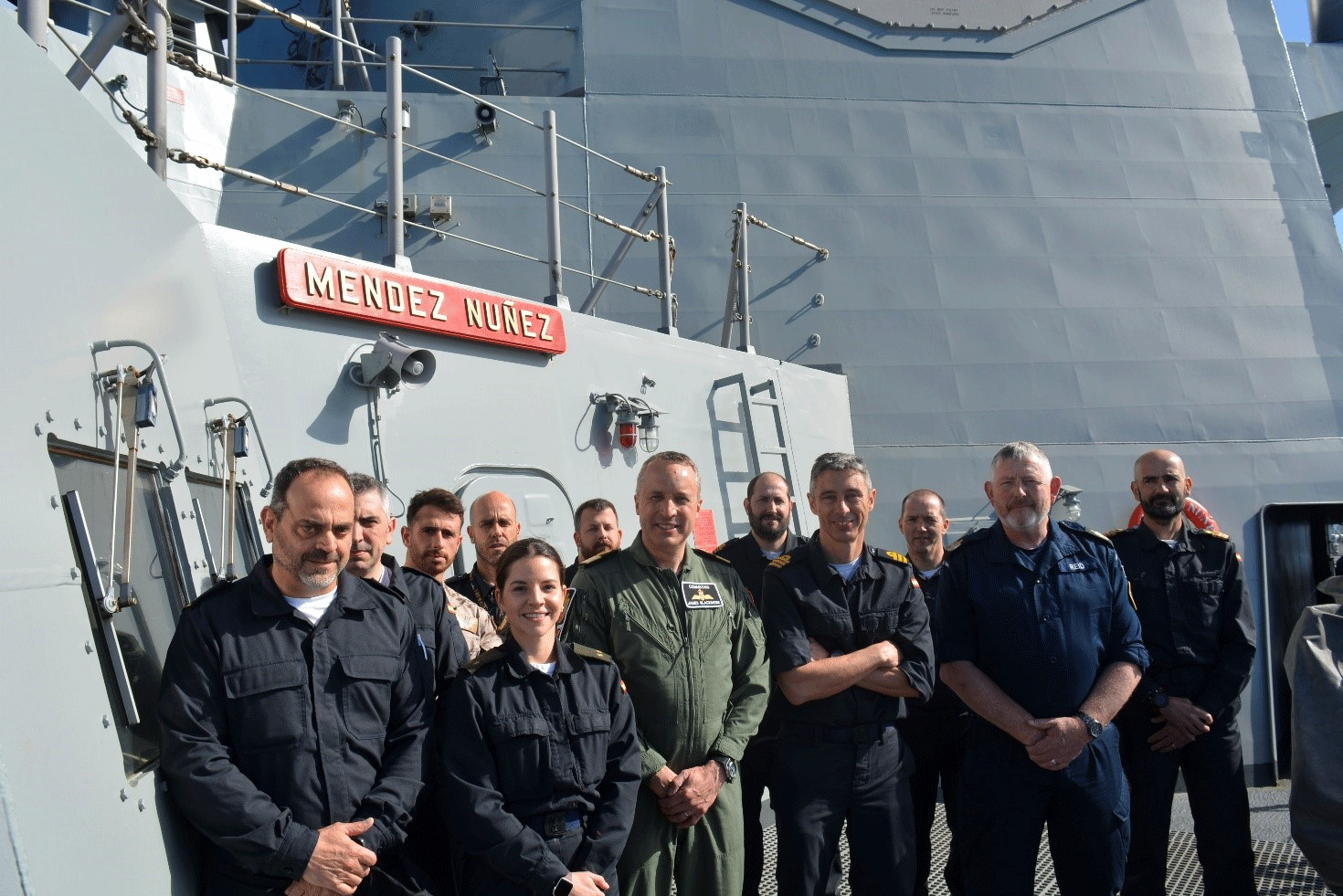For the next four months, the Navy ship will participate in the UK-led ‘Highmast’ deployment, along with ships from other allied and friendly countries.
The frigate Méndez Núñez has now joined the British aircraft carrier HMS Prince of Wales’s Battle Group—known as Carrier Strike Group (CSG) 25—with which it will sail for the next four months. Since leaving the Ferrol Arsenal, it has carried out a series of activities to advance toward full interoperability within this international grouping. One of these was the exercise in which the Méndez Núñez, as an opposing ship, faced off against the rest of the naval units. Its commander, Frigate Captain Jaime Salvador Muñoz-Delgado Perez, and two officers from his crew traveled by helicopter to the Prince of Wales to attend the first command conference, along with the rest of the participants in this phase of the deployment.
During these first days of integration, the Spanish frigate and the other ships have established the communications and command and control networks necessary to work in a coordinated manner, allowing naval units from the United Kingdom, Norway, Canada, and Spain to now operate together.
The Battle Group Commander, British Commodore James Blackmore, boarded the Méndez Núñez, where he learned firsthand about the Spanish ship’s capabilities and met its crew. This meeting on board served to exchange views on the operational details of the initial phases of the deployment.
Now, while the voyage to the Mediterranean continues, the various ships in the naval group are undergoing constant training, with individual and collective exercises, with the goal of achieving full operational readiness in the shortest possible time. In addition to the air, surface, and submarine defense exercises, Spanish pilots are training on the fighters and helicopters embarked on the British aircraft carrier.
After achieving these first milestones since joining CSG 25, the frigate Méndez Núñez is now sailing with the rest of the allied ships toward the Indo-Pacific area of operations, thus demonstrating its capabilities and the readiness of its crew. As Commander Muñoz-Delgado points out, “This rapid and effective incorporation into the naval group demonstrates the high degree of interoperability with our allies, with whom we share NATO procedures and ship crew readiness. Furthermore, the warm welcome from Commodore Blackmore and the commanders of the participating ships, as well as the atmosphere of camaraderie among all, have further facilitated our integration.”
Preparation and readiness
The full integration of the frigate Méndez Núñez into the Highmast deployment was preceded by extensive operational and logistical preparation, which began last September following the completion of its scheduled decommissioning period. During this period, it participated in various national exercises, after which it underwent operational qualification in January and February, which certified that the ship was ready and trained to perform its mission within the naval group.
From a logistical standpoint, readiness has entailed an additional effort, facing a deployment of just over four months in a remote location in the waters of the Indian and Pacific Oceans. This effort requires the preparation and procurement of necessary spare parts to keep all equipment and systems operational; the preparation of the crew, including medical assistance with preventive vaccinations; and the loading of necessary materials and supplies for a long and demanding deployment.
Nevertheless, participation in the “Highmast” deployment is an operational challenge for the frigate Méndez Núñez and its crew, but above all, it is an opportunity to demonstrate Spain’s technological capability and independence, the ability of our Armed Forces to project their operations into different geographical areas, and to reaffirm our commitment to maritime security and global stability.

